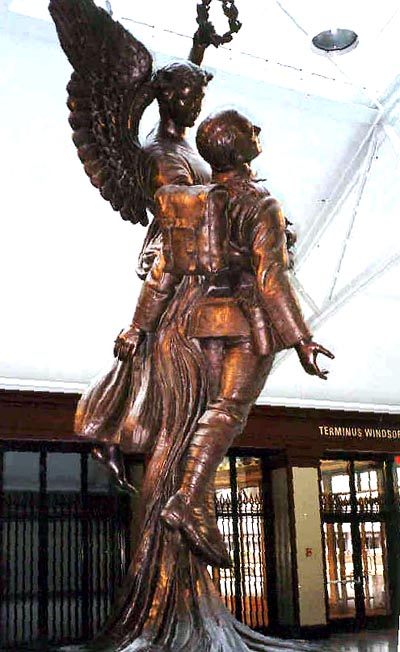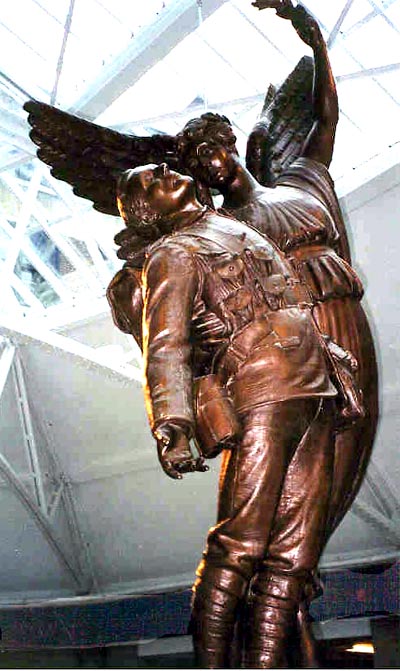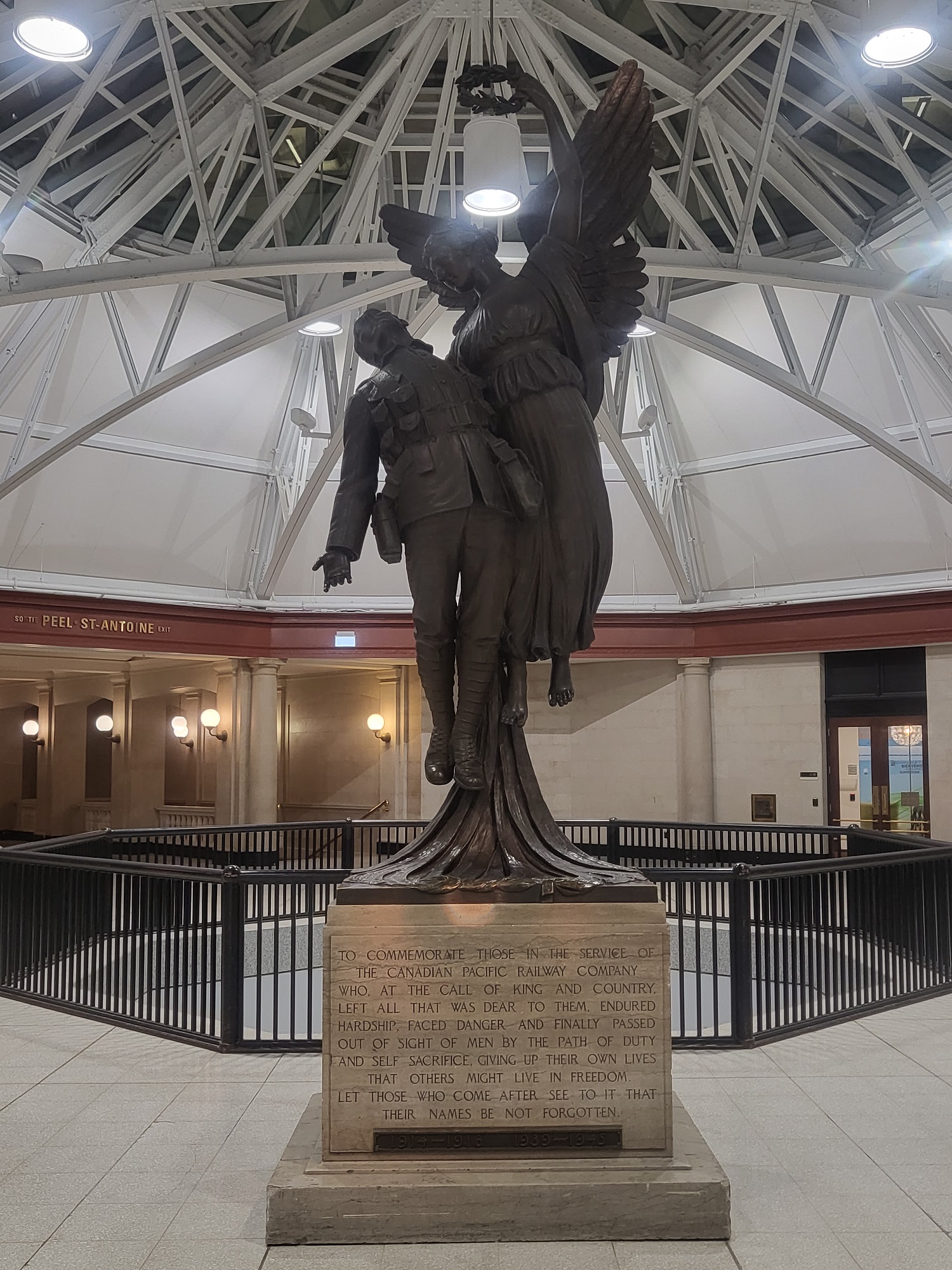Winged Victory was erected by the Canadian Pacific Railway in the memory of its employees who were killed during the First World War. It was unveiled by the Governor General Julian Byng, 1st Viscount Byng of Vimy on 28 April 1922.
The Canadian Pacific Railway commissioned three Winged Victory statues from Montreal sculptor Coeur de Lion MacCarthy to commemorate the 1,116 employees it lost in the First World War. All three statues were unveiled simultaneously on the same date. The statue depicts an angel carrying a deceased soldier to heaven at the moment of his death. The angel holds a laurel wreath, the symbol of victory, in her upraised hand. The other two identical memorials are in Manitoba and Vancouver.
After the Second World War, the date 1939-1945 was added to the inscription.
Coeur de Lion MacCarthy, the son of sculptor Hamilton McCarthy, produced numerous commemorative works after the First World War, including: Winged Victory in British Columbia; Great War Memorial and Lethbridge Cenotaph in Alberta; Winged Victory in Manitoba; County of Brome War Memorial, Verdun Victory Memorial, Monument to the Brave and Winged Victory in Quebec; Clifton Hill War Memorial and Woodstock Cenotaph in Ontario.


